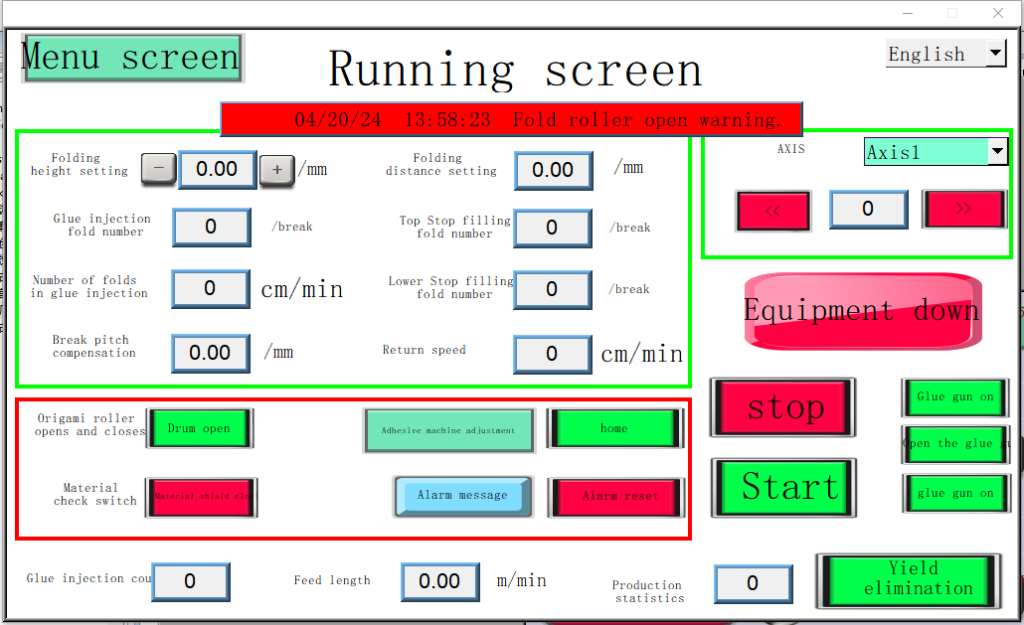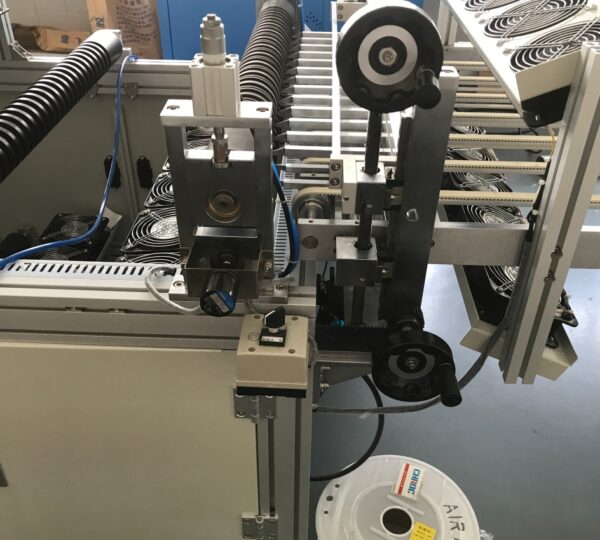Folding height is the vertical distance between the filter pleat’s peak and valley, directly affecting the total surface area, airflow resistance, and dust holding capacity of the vacuum filter. Too low a height reduces media area and shortens service life, while too high a height compromises structural integrity and affects pleat stability. In production, a vacuum filter pleating machine can set the pleat height of a vacuum filter. Many vacuum filter manufacturers ask this question when purchasing a vacuum filter pleating machine so that we will answer it below.
Standard folding height requirements for vacuum filters
Most household vacuum filters have an optimal pleat height between 8mm and 12mm. In comparison, industrial or HEPA-grade filters may use slightly taller pleats (generally up to 15mm) to maximize dust holding capacity under heavily contaminated conditions. A pleat height of 8-12mm means the vacuum filter pleating machines must maintain these heights within ±0.2mm to ensure stable airflow and avoid pleat collapse under pressure differentials. Therefore, in production, we recommend conducting a trial run with a standard height, 10 mm for general filter elements and 12 mm for fine particle HEPA filters, and conducting airflow and dust holding capacity tests to fine-tune the final settings. The optimal pleat density relative to the filter media permeability and target capture efficiency can be determined through such comparative tests.
The effect of the folding height of the vacuum cleaner filter pleating machine on the filtration efficiency
The folding height setting of the vacuum cleaner filter pleating machine directly affects several performance indicators. By allowing more pleats to be folded per unit depth, higher folding height increases the total filter area, improves dust capture, and extends cleaning intervals. However, folding pleat height increases the initial pressure drop, requiring a more powerful vacuum motor or increasing energy consumption. On the contrary, lower folding height has less resistance, but is prone to clogging in dusty environments. According to our customers’ tests in actual production, the standard non-woven filter element with a pleat height of 10 mm can achieve the best balance and achieve at least a 95% capture rate of 0.3 micron particles while keeping the pressure drop below 120 Pa.
Vacuum cleaner filter manufacturers must weigh these factors when specifying pleating machine settings for different filter types and end-user needs. This ensures that each pleat maximizes airflow uniformity and reduces dead zones, improving overall life and vacuum performance.
The vacuum cleaner filter pleating machine uses a stepper motor drive to achieve adjustable height
Dahe Intelligent’s vacuum cleaner filter pleating machine uses stepper motors and linear guides to accurately and dynamically adjust the folding height. Unlike cam-driven or fixed-gap machines, the stepper motor system allows the operator to input the precise pleating height through a touchscreen control screen. The linear guide converts rotary motion into smooth vertical displacement with a resolution as low as 0.05 mm. The architecture supports rapid switching between filter designs and can switch from 8 mm PET filter pleats to 12 mm HEPA pleats in two minutes.
At the same time, multiple height presets can be stored to reduce setup errors and ensure consistent production quality for different vacuum cleaner filter models. Maintenance benefits include simplified calibration procedures, as the stepper drive system automatically centers at power-up and verifies the folding height against a stored zero reference. This robust design reduces downtime and extends component life by eliminating wear points inherent in mechanical cam systems.
Ensures Accuracy and Repeatability
Accuracy and repeatability are critical to any vacuum filter pleating machine manufacturing for high-volume production. The vacuum filter pleating machine’s stepper motor and linear guide assembly provide closed-loop feedback that automatically corrects for subtle changes in media thickness or feed tension. An integrated encoder sensor monitors actual folding height in real time, compares it to the target value, and makes millisecond adjustments to maintain tolerance. This continuous calibration prevents pleat height drift over long production runs and ensures that every pleat on every filter element meets specified performance standards.
For manufacturers, this means they achieve higher first-pass yields, generate less scrap, and gain greater confidence in consistently meeting customer specifications. They also maintain detailed records of folding height deviations to support traceability, enabling them to quickly analyze root causes if they find an abnormal batch, which further enhances production reliability.
Integration into automated production lines
Dahe Intelligent’s vacuum filter pleating machine is designed for easy integration: its adjustable pleat height control interfaces with a central PLC system, enabling synchronized operation with the media unwinder, pleat sealing station, and final packaging robot. The linear guides’ compact size and low noise design make it easy to install in cleanrooms or noise-sensitive environments. The operator panel monitors the folding height settings, status alarms, and production quantities. Integration capabilities extend to ERP systems, ensuring that plant height data and machine performance metrics are directly fed into the quality dashboard. This maximizes the overall equipment effectiveness of high-volume vacuum filtration plants.
Achieving Optimal Folding Height
Maintaining the ideal folding height of a vacuum filter element pleating machine is a nuanced process that affects the filter element’s efficiency, airflow resistance, and output. The stepper motor-driven linear guide system allows for precise and adjustable height control, giving filter manufacturers the flexibility to optimize their pleating operations. The result is a reliable, adaptable, high-volume pleating line consistently producing filter elements that meet stringent quality and performance standards.






